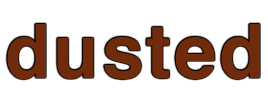|
|
 |
Dusted Reviews
Artist: A Hawk and a Hacksaw Album: The Way the Wind Blows Label: Leaf Review date: Oct. 17, 2006 |

|
|
|
 |
In the face of steadily crowded musical field of neo-Balkan impersonators and storytellers, Jeremy Barnes has conscripted reinforcements in order to bolster the sound of his own neo-'kan project, A Hawk and A Hacksaw. Even though the band is now officially duo with a gaggle of guests, Jeremy Barnes is still steering the ship, and with a surer compositional hand.
Using the much-lauded Balkan folk collective Fanfare Ciocarlia as a studio backing band, A Hawk and A Hacksaw have taken a bona fide shot of authenticity from these legit veterans. Fleshing out the songs with a wider array of instruments has improved the scope of Barnes’ songwriting. Where in the past there have been stumbles into the ramshackle and carnivalesque, this wider palette works has somehow honed his vision. Even with the alleged rough-and-ready medieval recording studio that the promotional material describes, the atmosphere (and the obvious chemistry with Fanfare Ciocarlia) sounds as fresh and lively as any of Barnes' best live performances.
This energy and showmanship dominates The Way the Wind Blows, much more so than on their previous two LPs. The band’s swollen carny horn-charge carries the album’s European melancholy along on stronger legs. There is a more definite fleshing out of parts/players here, the music moving with a spirited energy, even when it’s resigned to melancholy.
The potency of AHAAH's genres of choice are both the album’s difficulty and strength; if you aren’t partial to Balkan brass, klezmer or mariachi, abandon all hope of sticking this one out. These styles may be scattered about, diluting them somewhat from the rawest of traditional uses, but they retain their signature defining elements. The oom-pah beat and animated melodies, tethered to western song structures, really drive this album.
Having welcomed violinist Heather Trost fully into the fold as a songwriter and dueling musical foil, AHAAH are continuing along the slow path to more conventional songs. Placing her two solo-written contributions (compared to Barnes’ nine) in the middle of the record might slow the pace a little, but it doesn’t feel like a tangent. While the infrequency of her violin here feels like a missed opportunity, Trost's two relatively brief pieces show her capable of mixing up styles with a dash of the odd as Barnes did so successfully on the band’s eponymous debut.
By Scott McKeating
|







